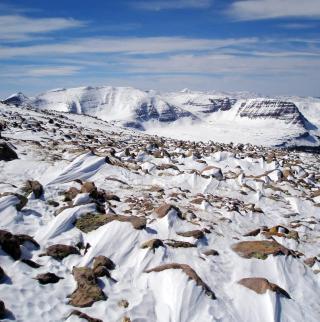November 1st Climate and Water Report for Utah

Current Valley Conditions (SCAN)
October brought a fantastic start to the 2022 water year, with 2.1 inches of precipitation accumulating in Utah’s valley locations! For perspective, this is more precipitation than fell from March through June of last year! Although the entire state benefitted from October’s storms, Northern Utah fared the best during the month. Soil moisture at Utah’s SCAN sites rebounded significantly due to the heavy precipitation and decreased evapotranspiration rates. The month ended with soil moisture at near record levels, except for the Uintah Basin and Southeast areas, which are closer to normal. Soil temperatures across the state ended October near normal. This is all good news for drought conditions in the state. Utah’s percentage of exceptional (D4) drought has dropped from 20% to 14% during the month. Let’s hope the trend continues.
Current Mountain Conditions (SNOTEL)
October precipitation in Utah’s mountain locations was well above normal at 196%. Statewide, we received 4.5 inches of precipitation for the month, which puts our current water year in the 93rd percentile. To put into perspective how much above normal these precipitation amounts have been, we are currently about four weeks ahead, meaning that Utah’s mountains normally don't receive that much moisture until late November. While it's still too soon to get overjoyed about our new water year and its excellent start, this is a great way to kick things off. As was discussed in previous reports, it is useful to provide a long-term perspective on how Utah is doing with the ongoing drought conditions, and in this case, how much the recent moisture has benefited things. To that end, if we combine the statewide precipitation deficit from the end of the previous two water years with the current conditions, we get roughly 11” of additional moisture (above and beyond what we normally receive) that will be needed to get us back to ‘normal’. For context, the median annual statewide precipitation is 32.1”, so our current deficit is roughly 33% of what Utah normally gets in a year. While that is still a steep hill to climb, it should be noted that the accumulated deficit was as high as around 15” a few months ago, so there has been definite improvement.
Perhaps even more encouraging is the fact that the statewide soil moisture in Utah's mountains is extremely high right now. Statewide soil moisture is currently at 70% of saturation, which is well above normal for this time of year and up from 21% last year. That’s a difference of almost 50 percent! In fact, current statewide soil moisture levels are above the previous maximum for this time of year from our 20 years of daily observations at Utah’s SNOTEL sites. For context, this time last year we were setting records for new minimum soil moisture levels… These conditions bode very well for next spring's snowmelt runoff efficiency. Soils are now very likely to remain at moderate to high moisture levels through the winter which will lead to an improved amount of runoff during next spring’s snowmelt season, which ought to help replenish our reservoir system—assuming we get a reasonable amount of snow this winter.
Unfortunately, Utah’s water supply conditions remain stressed. Utah’s reservoir storage is currently at 50% of capacity, which is 12% lower than last year at this time, causing our Water Availability Indices (WAIs) to remain at historically-low levels (bottom 20th percentile) for 10 of Utah’s 18 major basins. Our reservoir levels will not increase substantially until next spring when we receive the water stored in this winter’s snowpack, so water managers will need to continue to be diligent.
Finally, this is another reminder that our data have migrated to the new 1991-2020 climatological normals window. We recently published a Special Report to provide an overview of the updated normals published by the NRCS’ Snow Survey and Water Supply Forecasting (SSWSF) Program. Details regarding the new normals, including the Special Report, may be obtained via the Utah Snow Survey webpage dedicated to this topic.

